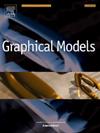Efficient extraction of experimental data from line charts using advanced machine learning techniques
IF 2.2
4区 计算机科学
Q2 COMPUTER SCIENCE, SOFTWARE ENGINEERING
引用次数: 0
Abstract
Line charts, as a common data visualization tool in scientific research and business analysis, encapsulate rich experimental data. However, existing data extraction tools face challenges such as low automation levels and difficulties in handling complex charts. This paper proposes a novel method for extracting data from line charts, reformulating the extraction problem as an instance segmentation task, and introducing the Mamba-enhanced Transformer mask query method along with a curve mask-guided training approach to address challenges such as long dependencies and intersections in curve detection. Additionally, YOLOv9 is utilized for the detection and classification of chart elements, and a text recognition dataset comprising approximately 100K charts is constructed. An LSTM-based attention mechanism is employed for precise scale value recognition. Lastly, we present a method for automatically converting image data into structured JSON data, significantly enhancing the efficiency and accuracy of data extraction. Experimental results demonstrate that this method exhibits high efficiency and accuracy in handling complex charts, achieving an average extraction accuracy of 93% on public datasets, significantly surpassing the current state-of-the-art methods. This research provides an efficient foundation for large-scale scientific data analysis and machine learning model development, advancing the field of automated data extraction technology.

利用先进的机器学习技术从折线图中高效提取实验数据
折线图作为科学研究和商业分析中常用的数据可视化工具,封装了丰富的实验数据。然而,现有的数据提取工具面临着自动化水平低和处理复杂图表困难等挑战。本文提出了一种从折线图中提取数据的新方法,将提取问题重新定义为实例分割任务,并引入了mamba增强的Transformer掩码查询方法以及曲线掩码指导的训练方法,以解决曲线检测中的长依赖关系和交叉点等挑战。此外,利用YOLOv9对图表元素进行检测和分类,构建了包含约100K个图表的文本识别数据集。采用基于lstm的注意机制进行尺度值的精确识别。最后,我们提出了一种将图像数据自动转换为结构化JSON数据的方法,大大提高了数据提取的效率和准确性。实验结果表明,该方法在处理复杂图表方面具有较高的效率和准确性,在公共数据集上的平均提取准确率达到93%,大大超过了目前最先进的方法。本研究为大规模科学数据分析和机器学习模型开发提供了有效的基础,推动了自动化数据提取技术领域的发展。
本文章由计算机程序翻译,如有差异,请以英文原文为准。
求助全文
约1分钟内获得全文
求助全文
来源期刊

Graphical Models
工程技术-计算机:软件工程
CiteScore
3.60
自引率
5.90%
发文量
15
审稿时长
47 days
期刊介绍:
Graphical Models is recognized internationally as a highly rated, top tier journal and is focused on the creation, geometric processing, animation, and visualization of graphical models and on their applications in engineering, science, culture, and entertainment. GMOD provides its readers with thoroughly reviewed and carefully selected papers that disseminate exciting innovations, that teach rigorous theoretical foundations, that propose robust and efficient solutions, or that describe ambitious systems or applications in a variety of topics.
We invite papers in five categories: research (contributions of novel theoretical or practical approaches or solutions), survey (opinionated views of the state-of-the-art and challenges in a specific topic), system (the architecture and implementation details of an innovative architecture for a complete system that supports model/animation design, acquisition, analysis, visualization?), application (description of a novel application of know techniques and evaluation of its impact), or lecture (an elegant and inspiring perspective on previously published results that clarifies them and teaches them in a new way).
GMOD offers its authors an accelerated review, feedback from experts in the field, immediate online publication of accepted papers, no restriction on color and length (when justified by the content) in the online version, and a broad promotion of published papers. A prestigious group of editors selected from among the premier international researchers in their fields oversees the review process.
 求助内容:
求助内容: 应助结果提醒方式:
应助结果提醒方式:


